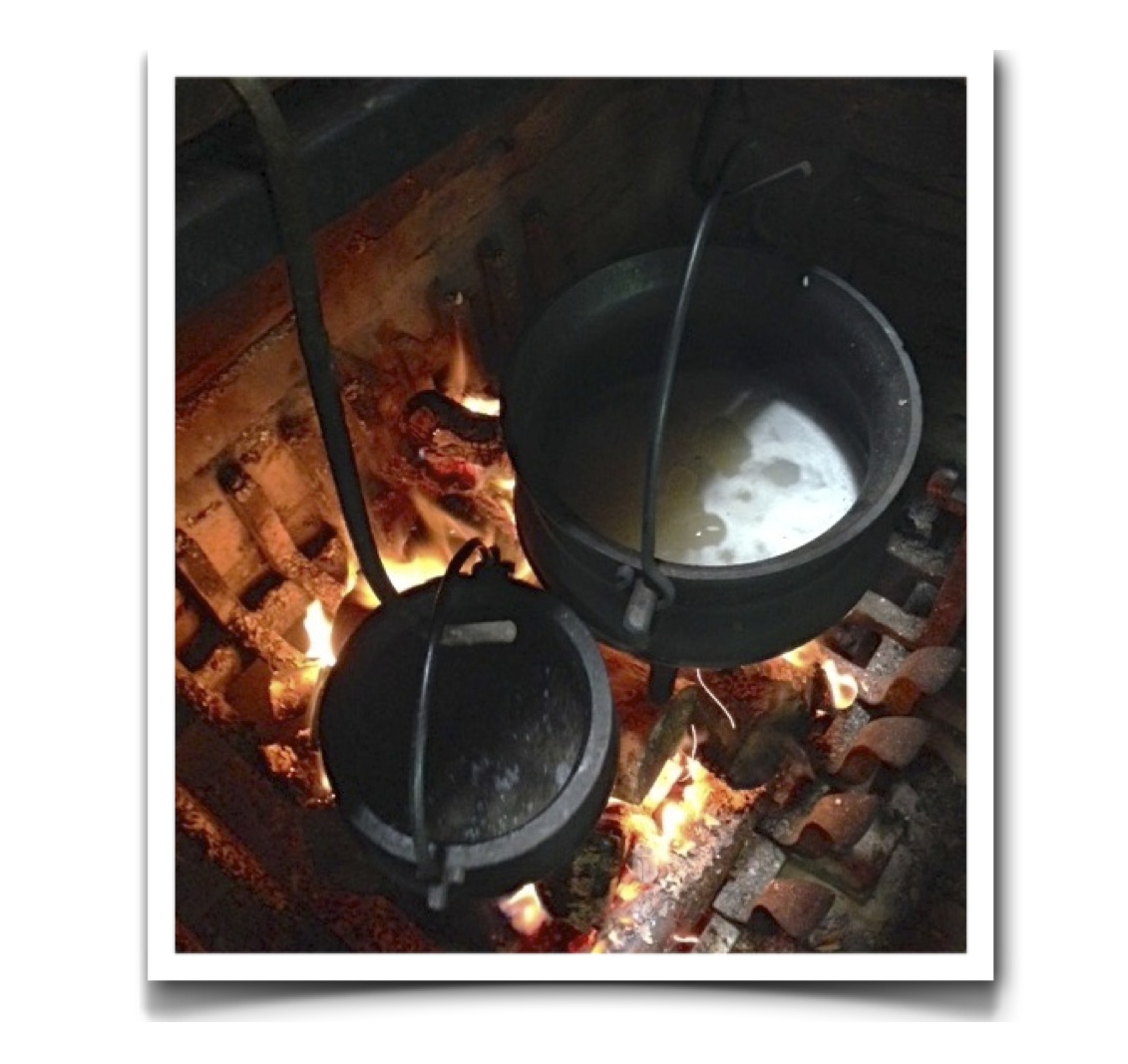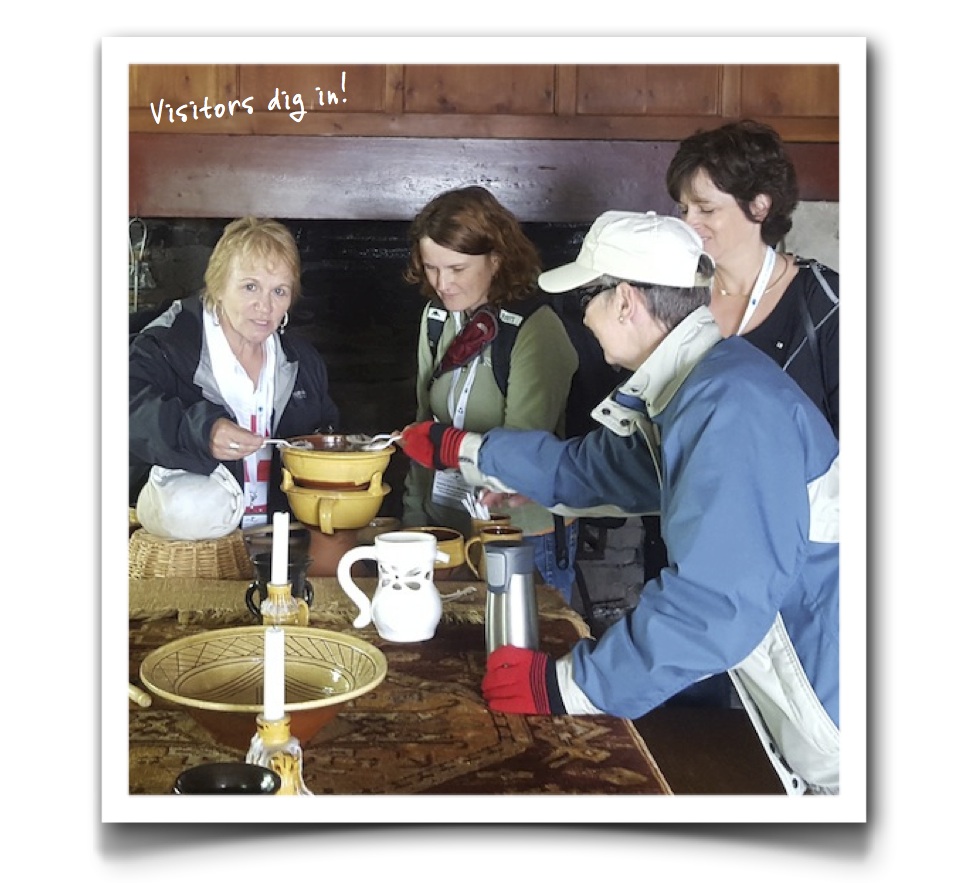Week 1 - Loblolly
By now you’ve probably realized that Loblolly is the love child of rice pudding and risotto. We were pleasantly surprised by how rich and creamy the rice tasted, despite being cooked in plain water. We figure the creaminess came from two things: the butter (we should note that our interpretation of a “good lump” of butter” was a really good lump of butter) and our final choice of rice (more on that in a bit).





Two Thumbs Up
By all accounts, visitors to the Colony’s kitchen really enjoyed this dish. A few questioned whether 17th century colonists in Ferryland would have had access to rice. Wasn’t it a tad exotic? Yes, rice was “exotic” in the sense that it had to be imported to Newfoundland. Then again, so did a heck of a lot of other foodstuffs including wheat, wine, sugar and spices. And in the grand scheme of things, the rice that ended up in a colonist’s pot in Ferryland may not have travelled as far as you might think.
Most of us associate rice with the Far East and places like China, India and Japan. But large quantities of rice were, and still are, also grown in parts of Europe. Rice found its way from Asia to Europe via Persia where the Arabs learned to grow and cook it. By the 8th century, the Moors were growing large quantities of rice in Spain. And by the 15th century, Northern Italy, the home of risotto, was also producing rice. Most of the rice imported into England was likely coming from Spain, Italy or the Arab lands. And if it was imported into England, there’s no reason why it couldn’t have ended up in Ferryland. According to one English source, rice was considered a cheap food as only one ounce plus “bisket and drink” would make a meal for a sailor.
Brown or White?
For us, the question wasn’t whether colonists at Ferryland ate rice, but what kind of rice would they have eaten? A couple of visitors suggested brown rice (rice still encased in its bran layer), since it’s less processed and more “natural”. It seems like a logical assumption. However, brown rice doesn’t store very well since oil in the bran layer has a nasty habit of turning funky if it isn’t kept in a cool, dry place. Fortunately, some very clever person, a very long time ago (like a couple of millennia ago) figured out that rice could be stored a whole lot longer if they removed the bran layer. The result? White rice. Since rice consumed in Ferryland had to travel from its point of harvest to England, and then be shipped across the Atlantic to Ferryland in the damp hold of a boat, we’re assuming that rice was white.
Long or Short?
All rice can be divided into two subspecies: Indica (long grain rices that grow in tropical and subtropical climates) and Japonica (short grain rices including varieties that grow in temperate climates like Italy and Spain). Does that mean the rice exported to Ferryland was short grain? Probably .... maybe.
Iran, the major rice producer and exporter in the Arab world at the time, produced a highly-praised, long grain rice called Sadri (something like Basmati). While it would have been more expensive than short grain rice from Italy or Spain, it’s not impossible that Sadri rice could have ended up in Ferryland.
Proof is in the Pudding
In the end, we decided to to test the Loblolly recipe with both a short (Arborio) and a long grain rice (Basmati). Both tasted great, but everyone agreed that the Arborio rice produced a thicker, richer texture. Not really all that surprising since short grained rice is traditionally used for risotto and rice pudding.
A couple of additional notes. We took the liberty of adding a few dried currants, mostly to add some visual interest to what is essentially a pot of white, gooey rice. We also suggest that you remove the rice from the heat just before it reaches the “standing spoon” stage described in the original recipe. The longer the rice cooks, the thicker, stickier and starchier it gets. You need some starch to create the creamy texture. But too much starch? Not so good.
The Solution
So here’s our “solution” to the Loblolly challenge. It you haven’t already tried it, cook up a batch and let us know what you think.
Ingredients
1/2 cup short grained white rice
1 tablespoon butter
pinch of salt
sugar
1/8 teaspoon cinnamon
1/4 cup dried currents (optional)
Preparation
- In a large saucepan, cover the rice with water and soak over night.
- Add 8 cups of water. Bring to a boil, then reduce heat and simmer until the rice is tender and mixture is creamy. Stir frequently. Add currents (if using) when mixture starts to thicken.
- Remove from heat and stir in butter, cinnamon and salt. Sweeten with sugar to taste.
- Serve warm.
